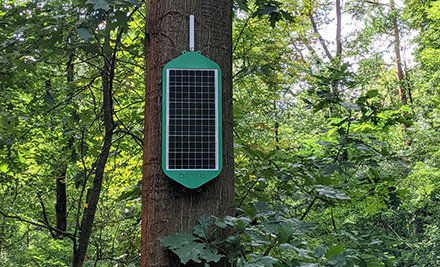Dryad Networks (Dryad), an environmental IoT startup based in Berlin, has launched its solar-powered sensor network Silvanet to the market, delivering ultra-early wildfire detection and forest monitoring across the globe. Source: Timberbiz
The new technology effectively mitigates wildfires by detecting them during the smoldering stage, between 0-60 minutes, enabling firefighters to be alerted quickly and subsequently extinguish a fire before it has spread.
Record temperatures and droughts have caused large-scale wildfires to sweep across the Northern Hemisphere, as the impact of climate change makes wildfire events more frequent and severe. According to the United Nations (UN), wildfires are likely to increase by a third by 2050.
In this rapidly changing environment, current techniques and technologies used to detect wildfires are insufficient because they rely on firefighters or cameras stationed on watch towers, or satellites that are thousands of kilometres away.
Existing wildfire prevention approaches can only detect a fire once it is seen above the forest canopy, relying on the visible presence of smoke plumes from large-scale fires. In some instances, this can take over six hours, at which point a fire has already become difficult to manage and requires large and costly firefighting resources.
Firefighting costs are rising with the National Interagency Fire Centre (NIFC) estimating the cost to be US$600 dollars per acre in the US.
The global financial cost of wildfires is predicted to reach up to US$200 billion dollars a year if one or more countries have bad fire seasons, according to Chuck Watson, a disaster modeler for Enki Research. Current numbers for 2022 put the financial bill for wildfire damage in North America alone at 3.7 billion dollars.
Dryad has spent more than two years developing its end-to-end Silvanet ultra-early wildfire detection and forest monitoring system, which incorporates low-cost solar-powered sensors, a unique LoRaWAN based mesh networking infrastructure, the dominant standard for IoT sensor systems, and a cloud analytics platform – a market first.
Other technological solutions often rely on 4G/LTE mobile networks that cannot penetrate dense forests and therefore have limited use in fire detection as they cannot be deployed in remote forest areas.
“Time is everything when it comes to managing wildfires and our technology gives firefighters the earliest, most reliable warning coupled with an exact location. Therefore, our aim is to give firefighters the best chance of extinguishing a blaze before it gets out of control and subsequently protect every hectare of the world’s forests, making wildfires and their devasting effects a thing of the past,” Carsten Brinkschulte, CEO, Dryad, said.
“We’ve seen an increasing interest in our technology, and we’re already working with partners from across the globe. Currently, we have 12 proof of concepts taking place in America, Europe, Canada, and Asia, and we have 230,000 sensors on order for 2023… By 2030, we aim to deploy 120 million sensors across the world’s forests.”






